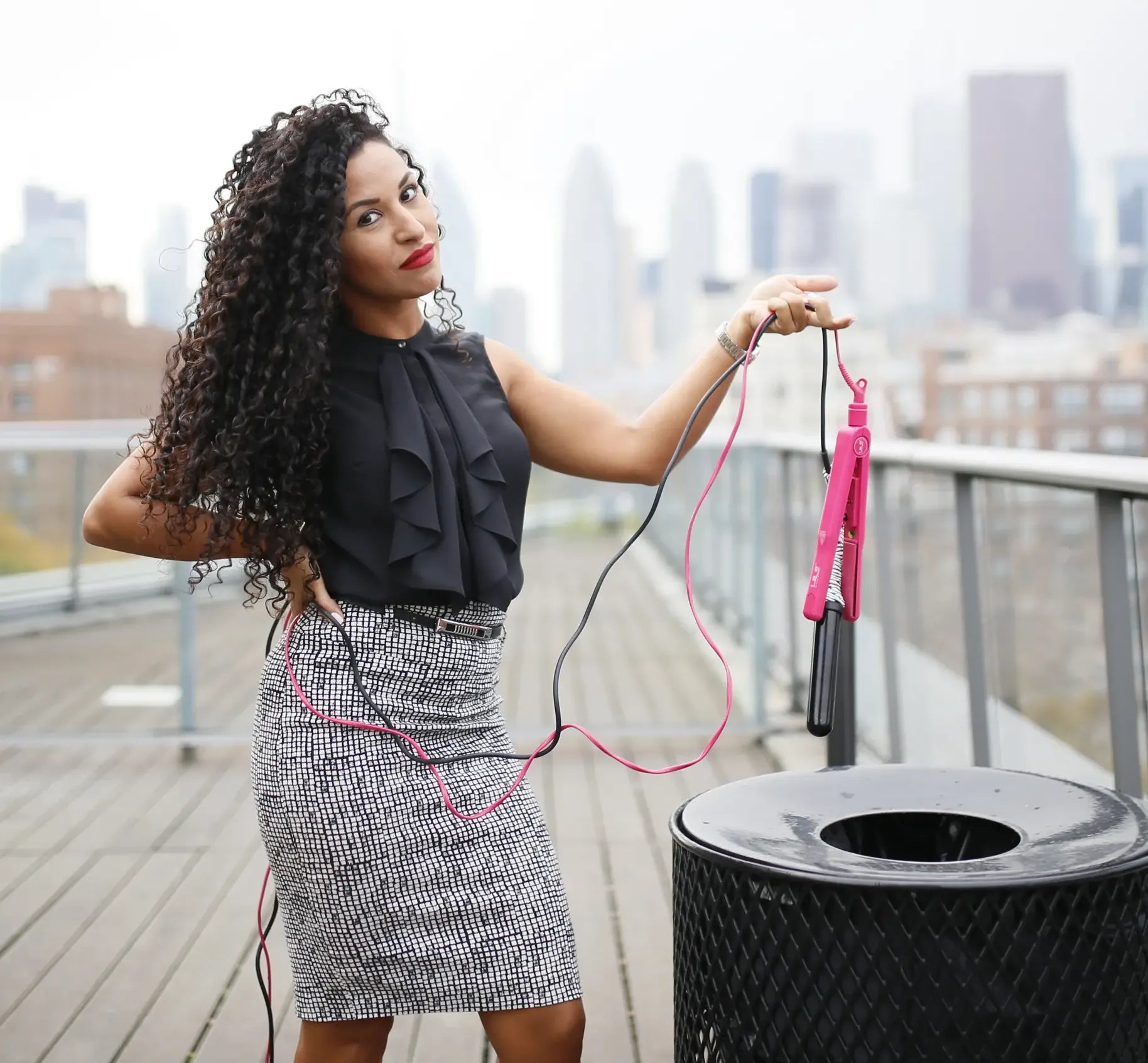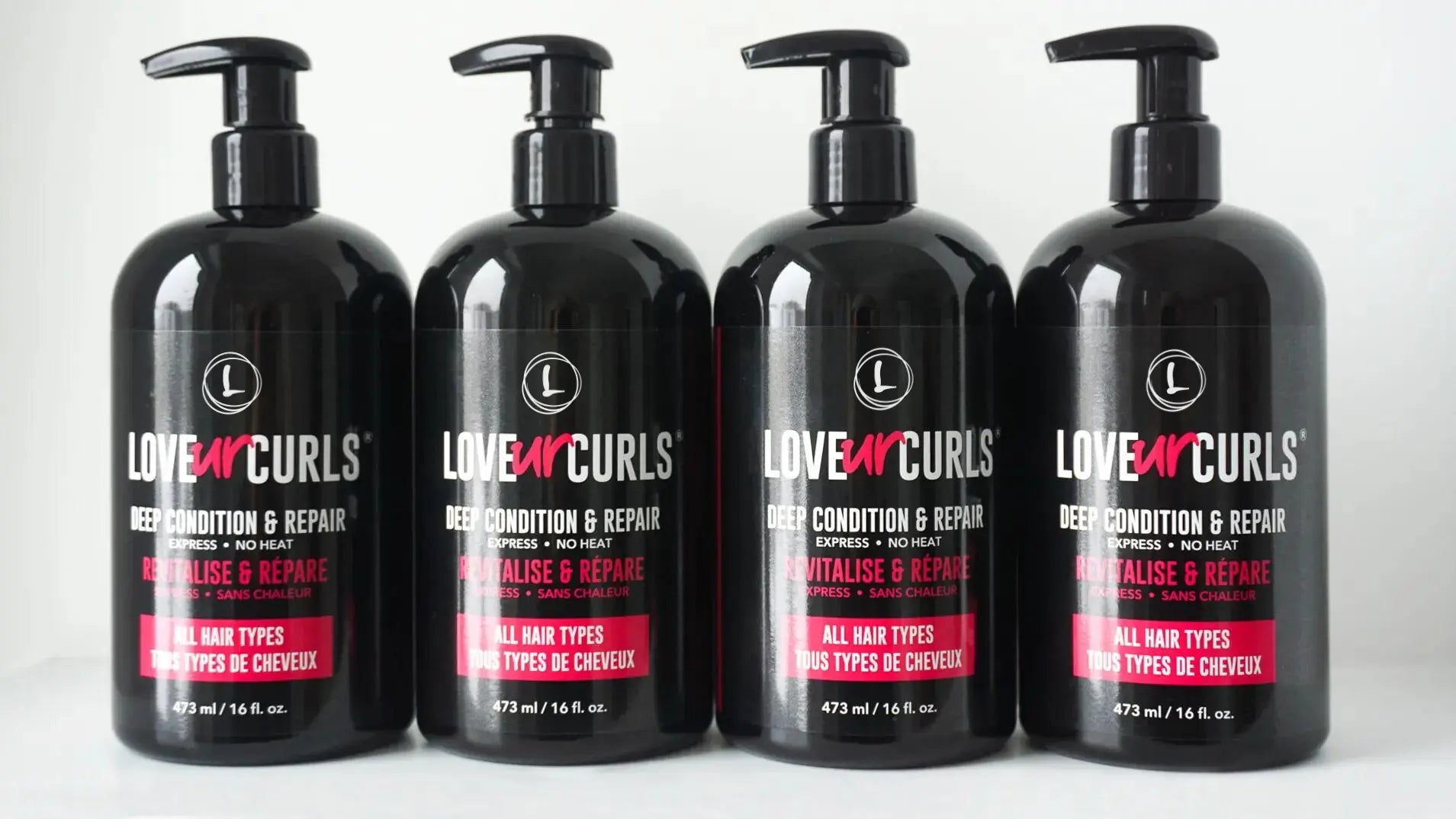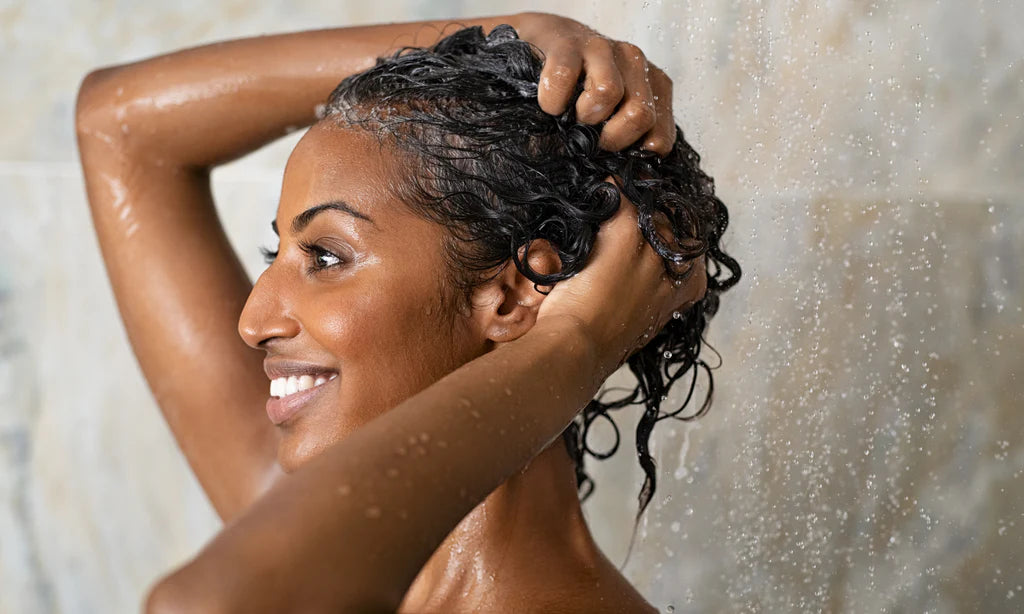
It doesn’t matter if you are a naturally curly newbie or you’ve been rocking curls since day one; we’ve all had our fair share of split ends.
Split ends can sneak in and wreak havoc on pretty much any hair type. Waves, curls or kinks—there’s no escaping the dry, frizzy and frayed ends that come as a result of your hair going to splitsville.
That’s why we’re here to tell you everything you need to know about split ends so you can not only prevent them but know what to do when you start to see the ends of your curls pulling apart.
What Causes Split Ends?
In order to understand how and why our hair splits, we gotta go down to the molecular structure of the hair. Each strand of our hair is made up of several layers; the outermost layer is called the cuticle. Your cuticle layer is like your hair’s protective armor. It helps to protect your hair from damage and lock in moisture to keep your hair from drying out.
So it makes sense that the stronger your cuticle layer, the healthier your strands will be. Things like excessive heat, dryness, and chemicals can stress out your curls and weaken your armor.

When you get dents in your armor, it leaves you vulnerable to damage and that’s exactly how split ends begin to form!
The unfortunate thing is that there are tons of things we do with our hair that can weaken and inevitably damage our cuticles. While some of the most common culprits are heat styling, color and chemicals, excessive washing and over manipulation can hurt your curls too.
Even though many curly girls have already sworn off heat styling tools like straighteners and irons, diffusing on really high heat too often can dry out your hair too. The truth is even daily brushing and styling of your curls can weaken your cuticle over time, leaving them vulnerable to splitting and breakage.
How to Repair Split Ends
While there are ways to help treat and smooth the appearance of split ends so they don't cause more damage, once your hair has split, there's really no way to reverse it.
CUTTING SPLIT ENDS TO REPAIR YOUR HAIR
The only proven method of dealing with split ends is to have them cut off—but this doesn’t include pulling and snapping damaged ends with your nails or fingers.
It’s kind of like when you find a loose thread in your sweater; trying to pull it out can sometimes cause more unravelling or fraying. The same goes for your hair cuticle. Pulling and stretching it can really weaken its overall structure and oftentimes breaks the hair unevenly.

You could be tearing away a portion of the outer layer (your cuticle) and leave the inner layer exposed. This actually makes the strand more vulnerable and prone to even worse splitting that can travel up to the healthy portion of the hair.
If you aren’t comfortable going to a salon for a trim there are a couple of other options you can consider:
SEARCH & DESTROY
This is exactly what it sounds like and it’s mainly for curly girls who have time and patience to spare. It basically involves you going through your ends and cutting any knots and splits you come across.
DUSTING
This a trimming technique made for those who want to rid themselves of damaged ends but are wary of losing any length. Less than a quarter inch is cut off from the bottom of each strand leaving behind such few clippings that it resembles ‘dust’, hence the term dusting.
Check out this video of our girl @thedelanoys who dusts her own ends often to ensure her beautiful long lush curlies stay super healthy.
Here's a Big Tip: If you’re in the regular habit of trimming or cutting your hair yourself, consider investing in a proper pair of hairdressing scissors. It’s important to make sure that the tools you use are sharp in order to ensure a clean cut. Using blunt or dull scissors that ‘trap’ your hair between the blades can bend or break your strands in the process and result in further damage.
Prevent & Protect
As always, the best cure is prevention! Here are a few tips that can not only prevent split ends but also help improve the look of already damaged hair.

More Moisture
Don’t forget that moisturized hair is healthy hair! Dry hair is certainly more prone to splitting and breaking.Deep conditioning is one of the best ways to maintain proper moisture levels and bring vibrance back to dry and damaged hair.
Used regularly the LUS (Love Ur Self) Deep Condition & Repair formula can help reduce split ends and breakage. It contains many amazing ingredients like vitamin E which helps to smooth and bind split ends to reduce the look of dry, damaged hair.
Hot oil treatments are also good solutions for preventing and treating split ends. Regular treatments (for most curly girls once every 2-3 weeks) will soften the hair and seal moisture into the cuticle, keeping hair from drying out.
Cut Out the Source of Damage
AVOID EXCESSIVE HEAT
It can be really hard to swear off heat entirely, especially if you're the kind of curly girl whose hair takes hours to air dry. Seek out products that have natural heat protectants in them. Shea butter and moringa oil are two ingredients we’ve included in our own formulas that help to style and repair curls, and also have natural heat protecting properties.

LIMIT CHEMICALS
While you don’t have to avoid coloring your hair altogether, there are ways to make coloring your curls safer. Avoiding harsh bleaching agents and opting for gentler lighteners is definitely a start! If you’re going for a drastic color change, take it in steps and allow your hair some downtime to strengthen and repair itself. And as always, we highly recommend consulting with a professional stylist!
Finally, it's important to simply be kind to your curls. Try treating them as you would an exspensive fabric. Handle them with care, always try to be gentle while styling and do your best not to wear them out. They'll thank you for it! 😉





